Michigan chestnut update – May 17, 2013
Chestnut development continues around Michigan with variable levels of damage reported from the cold snap.
Variability in chestnut growth stage continues across Michigan as cool temperatures settled in over the north this past weekend and slowed development. Cool weather and freezing temperatures early Monday morning (May 13) caused variable damage to foliage and buds, severe in some areas. Damage appears to be most significant in orchards located further south that were further along in their development. In the north, only Nevada – a European/Japanese hybrid known for susceptibility to winter injury – exhibited frosted, expanded leaves and no bud damage was found. Other varieties are still in early bud stages with little to no leaf expansion present.
As of 17 May the East Lansing Enviro-Weather station recorded 261 DD50 and ¼” rain over the last week, Clarksville recorded 232 DD50 and 2/5” rain the Northwest Michigan Horticultural Research Center accumulated just 177 DD50 with 7/10” rain last week.
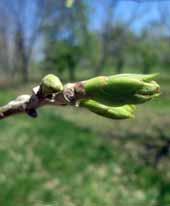
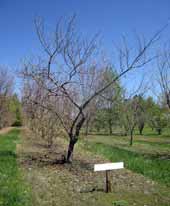
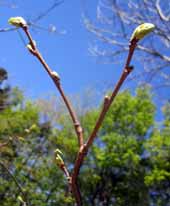
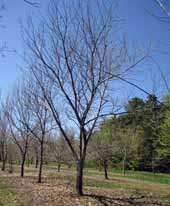
Left to right: Photos 1 and 2 show Chinese chestnut seedling development in Traverse City, Mich. Photos 3 and 4 show the European/Japanese hybrid Colossal in Traverse City, Mich., May 15 2013. Photo credits: Erin Lizotte, MSU Extension
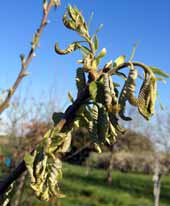
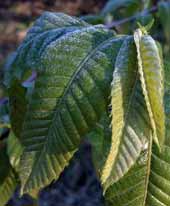
Left to right: Photos 5 and 6 show frost/freeze damage to Colossal in southern Michigan.
Photo credits: Mario Mandujano and Dennis Fulbright, MSU
Dormant oil applications for mite management should be wrapped up with many growers having already made the first fertilizer applications of the season. No adult mites or eggs were visible during scouting this week. Beneficial ladybug larvae were seen stalking the backs of chestnut leaves in the north. Ladybug larvae are highly beneficial predators of a variety of insect pests including aphids and mites. The Asian lady beetle larva resembles a small, spiny alligator with a blue-black body and two rows of small, orange to reddish spots on its back. The larvae appeared to be newly hatched as they were very small (about 0.125 inches), but can grow to a half-inch as they mature. Be on the lookout and know how to identify this helpful insect on your next scouting trip.
Growers should be placing yellow sticky traps in orchards to track the arrival of potato leafhoppers. Like many plants, chestnuts are sensitive to the saliva of potato leafhoppers which is injected by the insect while feeding. Damage to leaf tissue can cause reduced photosynthesis that can impact production and quality, and damage the tree. Most injury occurs on new tissue on shoot terminals with potato leafhopper feeding near the edges of the leaves using piercing-sucking mouthparts.
Symptoms of feeding appear as whitish dots arranged in triangular shapes near the edges. Heavily damaged leaves are cupped with necrotic and chlorotic edges and eventually abscise from the tree. Severely infested shoots produce small, bunched leaves with reduced photosynthetic capacity.
Adult leafhoppers are pale to bright green and about 0.125 inches long. Adults are easily noticeable, jumping, flying or running when agitated. The nymphs (immature leafhoppers) are pale green and have no wings, but are very similar in form to the adults.
Potato leafhoppers move in all directions when disturbed, unlike some leafhoppers that have a distinct pattern of movement. Potato leafhoppers can’t survive Michigan winters and survive in the Gulf States until adults migrate north in the spring on storm systems. Watch for a future Michigan State University Extension articles on potato leafhopper management recommendations and more scouting tips, or visit www.chestnuts.msu.edu.



 Print
Print Email
Email




